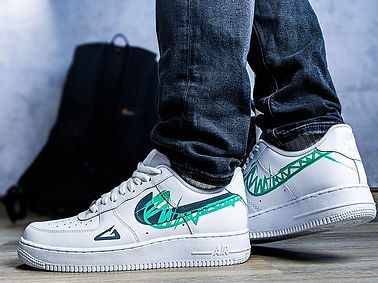
The New Sneakers
The world of sneakers, like every industry, has its share of innovation. Given the constant growth of this industry, the number of innovations are only exponential. The creations go as much through the concepts of new sneakers but all the more through the development of new technologies as well as an innovation of materials.
L'élaboration des nouvelles sneakers

The development of new sneakers
Like all business sectors of a company, innovation must respond to a concrete, planned and circumcised process. A wide variety of factors, such as the skills available internally or externally, the sector of activity or the size of the company have a very strong influence on the construction of this process, which is specific to each organization. Much research has been carried out to model the innovation process. The innovation process is not linear, each step of the process has uncertain outcomes. Return trips are therefore necessary in order to develop the sneakers in the best possible way. The role of research and development is not based solely on the generation of innovative ideas. Because in the event of a problem encountered during development, the company first draws on its knowledge base in order to find a solution. Innovations should not only bring something new to the product, but should also bring a competitive advantage to the company compared to other competitors and which will allow it to stand out.
Les matériaux de demain
Materials of tomorrow
With regard to the materials used in the manufacture of sneakers, as in the whole of the textile industry, so-called "classic" raw materials such as cotton, wool, polyester, etc. are always the first choices. However brands as well as public opinion strive to be always more respectful of the environment, that is why, speakers from amazing materials have arisen in recent years in the sneakers market.
The best known and most concrete example is that of sneakers made with organic fibers such as algae foam for example. As for Kanye West who expressed and exposed his last idea which was to use algae as the main material of his “Yeezy Clogs”.
Driven by the desire to produce his sneakers in the United States and to be in accordance with a certain ecological ethic, the rapper explained that he wanted to develop his ranch in Wyoming in order to build his own hydroponic farm. An infrastructure that will allow him to make a perfect foam based on algae for the sole of his fangs signed Yeezy.

L'innovation de son rôle

The innovation of its role
Regarding this innovation, we will rather look at its social aspect by seeing how this role has been innovated.
In the evolution of its use, certain pairs of sneakers are sought after and purchased for the purpose of being personalized and customizing. But what exactly is customization?
The customization is otherwise called a product personalization, here the pair of sneakers. This trend is gradually establishing itself in the world and in the world of sneakers. This increase in customization accumulated over the past few years is linked to a trend, to a movement of democratization which makes it possible to retain consumers. The power to personalize a product according to one's own wishes is born with the personalization of luxury products.
The prime example is the Louis Vuitton brand which, since its creation, offers tailor-made trunks with the possibility of affixing and engraving its initials, However today, major brands, through the internet, use personalization to revalue their products so that it becomes different and this by the will of the consumer. One of the first brands to try this is Nike, which allows the customer to create a unique pair of sneakers on its website; and the choice of the Air force 1 is known to be the best because the pair is all white and is made of large pieces of leather. This customization process is therefore a kind of exchange of good process because for the consumer he has a pair of sneakers that traces his personal tastes and this is profitable for the brand because it obtains a unique pair and which increases in value. eyes of the consumer and which consequently allows more sneakers to be sold
The prime example is the Louis Vuitton brand which, since its creation, offers tailor-made trunks with the possibility of affixing and engraving its initials, However today, major brands, through the internet, use personalization to revalue their products so that it becomes different and this by the will of the consumer. One of the first brands to try this is Nike, which allows customers to create a unique pair of sneakers on their website; and the choice of the Air force 1 is known to be the best because the pair is all white and is made of large pieces of leather. This customization process is therefore a kind of exchange of good process because for the consumer he has a pair of sneakers which traces his personal tastes and this is profitable for the brand because it obtains a unique pair which increases in value. eyes of the consumer and which consequently allows more sneakers to be sold
Quelques exemples d'innovations
Some examples of innovation
Let's start with Nike, which has established itself as the benchmark brand in terms of sneakers. In 1973, Bill Bowerman, the co-founder of Nike, created the famous “Nike Wafle Racer” sole. One day, seeing his wife making waffles, he suddenly had the idea of pouring polyurethane into a heated waffle iron in order to lighten the weight of the sneakers. But the co-founder was obsessed with performance, he always thought sneakers were too heavy. Instead of using stiff soles, he used lumpy soles. And this is how the first technological revolution in footwear was created.
As for Adidas, we can cite its innovation in the 1980s. Adidas created a new sneaker with improved stability which they called "Torsion technology".
This new innovation offers a stabilization function that uses a flexible upper in the middle of the sole of the sneakers. When it flexes, the upper provides support from the forefoot to the heel. Today, a good number of sneakers at Adidas use this same stabilization system which turns out to be much more ingenious than initially imagined.
We can also cite Nike with its innovation called "Nike Flyknit". This invention is a material composed of strong as well as lightweight yarns that have been woven into a single base to provide good support to the wearer of the foot on the base of the shoe. Some areas of the sneakers have a tighter weave to provide more support to the foot, and other areas are woven to be more flexible.